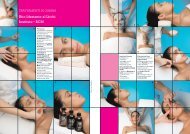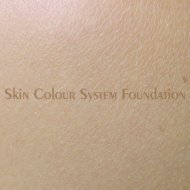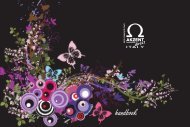Download handbook - BCM
Download handbook - BCM
Download handbook - BCM
Create successful ePaper yourself
Turn your PDF publications into a flip-book with our unique Google optimized e-Paper software.
Warm Colours and Cool Colours<br />
Colours can be classified as warm or cool. Reds and Yellows and their intermediates are<br />
conventionally referred to as Warm Colours. Greens and Blues and the admixtures of them<br />
are regarded as Cool Colours. Violet, resulting from the combination of a warm colour<br />
(red) with a cool one (blue), can be considered warm or cool depending on the prevalence<br />
of the red or of the blue colour.<br />
How to Conceal Dyschromias<br />
A correct know-how of the Basic Color Theory is essential for facing most common<br />
unwanted problems of skin imperfections, for choosing the most suitable colour<br />
foundation and smoothing out complexion in the most appropriate way. As explained,<br />
opposing colours neutralize each others. Therefore, to conceal ruddy tones (couperose,<br />
spots, etc.) it is advisable to use a foundation with a green chromatic dominance.<br />
According to the same principle, it is recommended to use orange-grade colours to<br />
neutralize blue tones (veins, halo beard, dark circles) and yellow-grade foundations on<br />
violet tones (shadows under the eyes, bruises, angiomas).<br />
The product should be applied with a sponge to work wide areas and with a brush on<br />
small areas. The product must be dosed according to the intensity of the dyschromia.<br />
5






